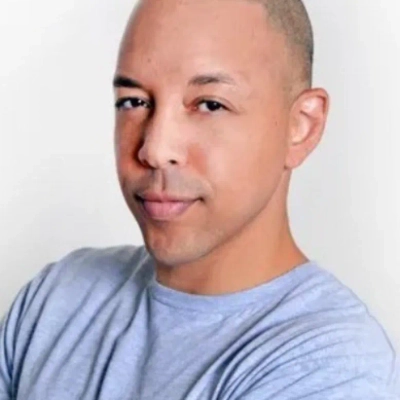10 Tips for Building a Compelling Personal Brand that Increases Industry Visibility
In today's competitive business landscape, a strong personal brand can be the key to unlocking new opportunities and increasing industry visibility. This article presents expert-backed strategies for developing a compelling personal brand that sets you apart from the crowd. From crafting authentic narratives to leveraging cultural truths, these insights will help professionals at any stage enhance their personal brand and make a lasting impact in their field.
- Craft a Compelling Brand Story
- Bridge Technology and Business Outcomes
- Target Niche Audience with Authentic Expertise
- Share Vulnerable Lessons from Business Turnarounds
- Showcase Raw Talent in Problem-Solving Videos
- Challenge Industry Norms with Contrarian Viewpoints
- Leverage Cultural Truth in Personal Branding
- Position as Thought Leader, Not Operator
- Incorporate Client Stories into Content Strategy
- Demonstrate Professional Skill Through Visual Documentation
Craft a Compelling Brand Story
One of the most rewarding experiences was working with a leadership coach who was a finance guy turned consultant. He had this unique take on consulting through animal spirit analogies but really struggled to explain the concept to his audience. He posted content, he had a basic website, he shared animal posts, but nothing happened.
To the everyday person, they just didn't understand it. It took me a while to understand it as well, but we worked hard on finding the point that linked what he did to the benefits his Ideal Customer Profile was looking for.
So we went back to the drawing board. We worked on the brand positioning and message first.
We refined the pain points through interviewing a past client and getting the exact language he used to craft our message.
We didn't need to talk about the HOW but the WHY was what we needed to nail. We created a brand story and mission one-liner:
"Peak Performance Coaching for Purpose-Driven Leaders"
Together, we crafted a narrative that spoke to his ICP and piqued their curiosity.
We redid his website, loaded it with testimonials, and created a lead magnet that spoke directly to his audience: The Purpose-Driven Leader's Playbook: 9 Steps to Achieve Peak Performance
But within the document, we highlighted his unique point of view, so by the end, the clients who came out the other side were already prequalified.
The key takeaway here is to understand your customer and speak their language. Laying these foundations is critical before going out to market.

Bridge Technology and Business Outcomes
A few years ago, I worked with a senior executive in the technology sector who wanted to transition from being seen as a behind-the-scenes operator into a recognized thought leader in digital transformation.
The Challenge
He had deep expertise but little visibility. His LinkedIn profile was dormant, he rarely spoke publicly, and most people outside his company didn't know his name.
My Approach
Positioning & Storytelling
We defined his core narrative: instead of framing himself as "a tech guy," we positioned him as the bridge between technology and business outcomes, showing how digital tools could directly drive revenue and growth.
His tagline became: "I simplify digital transformation so companies can scale without chaos."
Content Strategy
He began publishing short LinkedIn articles every two weeks — not technical breakdowns, but relatable leadership lessons tied to technology.
Example: Instead of "5 AI Trends in 2025," he'd write "How I Explained AI to My 10-Year-Old and What Every CEO Can Learn From It."
Visibility & Engagement
We targeted industry panels and podcasts where he could showcase his practical, jargon-free perspective.
On LinkedIn, instead of posting links, he started sharing personal anecdotes blended with insights, which encouraged authentic engagement.
Consistency & Signature Style
Every post ended with a one-line, bold takeaway — this became his recognizable "signature."
He used storytelling with analogies (sports, parenting, travel) to make complex tech accessible.
The Results
In under 12 months, he grew from approximately 1,200 LinkedIn followers to over 18,000, with consistent 10-20k impressions per post.
He was invited to speak at two major tech conferences where previously he had no presence.
He landed a non-executive director role purely through visibility of his thought leadership.
The Unique Element
The differentiator was humanizing technical expertise. While most peers pushed heavy whitepapers or jargon-heavy updates, he became the relatable storyteller in a space crowded with buzzwords. That made him approachable, memorable, and shareable.

Target Niche Audience with Authentic Expertise
I worked closely with a financial coach who enrolled on our app Conbun to offer online consultations. When she first enrolled, she was facing difficulties standing out among other wealth management coaches. Due to this, her consultation bookings were minimal despite her impressive credentials. I guided her in repositioning her brand from a different angle. Her specialty lay in helping freelancers and creative professionals build financial stability in unstable and unpredictable income environments.
The breakthrough came when I shifted her brand content strategy from generic financial advice to storytelling about her own journey from a struggling freelancer to a financially successful woman. Instead of just listing her professional credentials on the platform, we crafted a strong narrative around relatable life scenarios that freelancers and creative professionals face, like tax complexities, irregular income, financial freedom, and retirement planning. We started sharing specific case studies and actionable insights, which strongly resonated with the target audience.
Within 3 months, she became one of the top-booked consultants on the platform. Users started requesting consultations specifically from her. The fusion of niche expertise and authenticity became a unique element that made her brand compelling. We did not try to position her as an "everything-expert" but rather a go-to expert for a specific target audience who faced specific challenges. This strong approach not only increased her visibility on our app but also provided her with opportunities outside Conbun.
Share Vulnerable Lessons from Business Turnarounds
The best example that comes to mind is a CEO we helped who was a brilliant public speaker but had no online presence. We worked with him to develop a content strategy that focused entirely on his unique experience. He had a background in turning around failing businesses, so we had him tell raw, unfiltered stories about his failures and successes. The compelling element was the authenticity and vulnerability. Instead of talking about his wins, he shared his mistakes and the lessons he learned, which made him incredibly relatable. That genuine transparency is what resonated with his audience, transforming him from an unknown leader to a trusted authority in his niche.
Showcase Raw Talent in Problem-Solving Videos
For a long time, the most talented members of our operations team remained invisible to the outside world. They excelled in their roles but weren't in the spotlight. I realized that if we could build a brand for our people, we could build a brand for our business.
The unique element that made one of my technician's brand compelling was his raw, unpolished, and authentic expertise. We didn't attempt to transform him into a polished corporate figure. Instead, we allowed him to be himself. We began with a simple concept: we would film him solving a real-world problem in our warehouse. The videos weren't slick or perfect. They simply showcased a person who was passionate about his work.
The impact was immediate. The videos were a huge success. The brand became a reflection of our company's values: honesty, authenticity, and a commitment to problem-solving. The technician transitioned from being invisible to becoming a thought leader in our industry. As his visibility grew, so did our business. Our marketing team's content became more authentic because it originated from a real person. Our operations team took great pride in him, which boosted their morale.
What I learned is that the best personal brand isn't a fabricated persona. It's an honest reflection of who you are and what you do. My advice is to identify a natural expert within your organization and provide them with a platform to shine. That's a brand that will always be compelling.

Challenge Industry Norms with Contrarian Viewpoints
I worked with an e-commerce brand founder who was completely invisible in their industry despite running a profitable business. They were posting generic entrepreneurship content and getting zero engagement. I had them completely pivot their content strategy to focus on one contrarian viewpoint they held about e-commerce - they believed most "scaling strategies" were actually killing profitable businesses. Instead of sharing typical growth hacking tips, they started sharing specific examples of how obsessing over revenue growth often destroys profit margins and sustainable operations.
The contrarian angle combined with specific, real-world examples from their own business. Everyone else in e-commerce was preaching "scale at all costs" and "10x your revenue." This person started calling out why rapid scaling often leads to cash flow problems, quality issues, and burned-out teams. They shared stories of turning down large wholesale deals that would have hurt their margins, or choosing slower growth to maintain product quality and customer satisfaction.
Their content went from getting single-digit engagement to having other e-commerce founders sharing and commenting on their posts. More importantly, they started getting invited to speak at industry events and other business owners began reaching out for advice. The key was having the courage to take a stand against popular "growth hacking" mentality rather than trying to appeal to everyone.
Leverage Cultural Truth in Personal Branding
One of the most rewarding experiences has been guiding a 19-year-old creator on Ranked who was passionate about beauty and luxury brands like Sephora and YSL. She had the talent and the voice but lacked visibility in an industry where most attention still goes to established influencers.
The unique element that made her brand compelling was authenticity. Instead of coaching her to polish herself into a corporate mold, we leaned into her unfiltered, cultural voice, the way she spoke about products as part of her lifestyle, not as a staged endorsement. Through Ranked, she was able to share those stories directly with her community, and brands quickly noticed the engagement. Within months, her content was outperforming larger influencers because it felt real and relatable.
The outcome was dramatic. She gained visibility, landed partnerships, and became proof of what we believe at Ranked: the future of personal branding is not about perfection, it is about cultural truth. When you lead with that, your visibility rises because people see themselves in your story.
Position as Thought Leader, Not Operator
A CEO I worked with felt "under the radar" in his own industry. He had helped build a highly successful company, but his personal visibility wasn't aligned with his leadership role or the impact he was making. When he went off on his own, we started working together. Together, we built a personal brand strategy that highlighted his expertise, point of view, and leadership style centered around LinkedIn. Within months, his visibility exploded in his industry, leading to new business opportunities, media features, industry recognition, high-value partnerships, and ultimately, the successful sale of his company.
The unique element? Positioning him as a thought leader, not just an operator. Once his brand reflected the caliber of his expertise, the right people started paying attention, and doors opened quickly. It may seem like a simple approach, and it is. Go back to basics. It works!

Incorporate Client Stories into Content Strategy
Last year, we collaborated with a consultant in the property sector who possessed great expertise but had almost no digital presence - surprisingly. We developed her brand around a strong narrative of "simplifying complex property deals," complemented by clean design and sharp messaging. The turning point came when we incorporated real client stories into her content, rather than relying on generic advice. This human element made her instantly relatable and positioned her as an authority in her field. Within six months, her profile views and inbound leads doubled.

Demonstrate Professional Skill Through Visual Documentation
I may not be familiar with the corporate definition of "personal brand," but I can share an experience about helping one of my team members become the most trusted roofer on my crew, which significantly increased his visibility in our industry. This wasn't about creating a logo or a sophisticated website; it was about his work. His "personal brand" was built on his commitment to quality and his reputation as a craftsman.
I had a team member who was quiet but an excellent roofer. He was a professional, but he didn't communicate much. I advised him to start documenting his work. His unique attribute was his attention to detail. I instructed him to photograph every completed flashing, every perfectly aligned shingle, and every clean job site he managed. I had him start sharing these photos on his personal social media accounts. I told him, "You're not just a member of a crew. You're a professional. Show people what that looks like."
The results were immediate and somewhat surprising. People began to notice the quality of his work, and they started requesting him by name. They would see his photos and say, "I want the person who did that roof." He received more requests than anyone else on the crew. His visibility increased, and so did his reputation. He transitioned from being a quiet crew member to becoming a trusted expert. All of this stemmed from simply showcasing his work, not talking about it.
My advice to anyone who wants to build a "personal brand" is this: stop trying to talk your way into a reputation. Your brand isn't a strategy; it's the quality of the work you do. The most compelling aspect of a professional is their skill. Find a way to demonstrate that to the world, and your reputation will build itself. That's the only way to establish a brand that endures.






